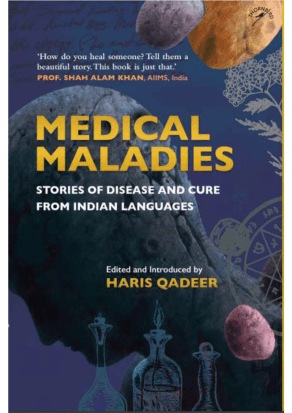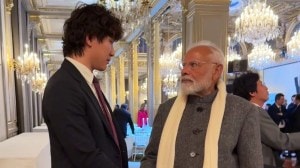Title: Medical Maladies: Stories of Disease and Cure From Indian Languages
Author: Haris Qadeer
Publisher: Niyogi Books
Pp 340, Rs 495
When I picked up Medical Maladies: Stories of Disease and Cure From Indian Languages, edited and introduced by Haris Qadeer, I knew I was up for a gloomy ride. Gloomy, yes, given the premise. However, as I read through the brilliantly-curated anthology of 19 short stories, deeper themes and topics emerged— from individual experiences of abject helplessness and depression in the face of impending death to societal ills such as female foeticide, rape and casteism, among others, and the dilemmas faced by medical practitioners.While reading the names of India’s literary stalwarts — Tagore, Manto and Premchand, whose stories are a part of the anthology — intrigues at first, tales by popular writers such as Jeelani Bano,Bibhutibhushan Bandhopadhyay and Annie Zaidi offer much flair to the mix, while those by medical practitioners themselves — Rashid Jahan and Shirin Shrikant Valavade — make for an interesting read, while upping the book’s diversity quotient.
This is the thing. The anthology does well on diversity, whether it is regarding the authors, the premises covered or the languages (all stories have been translated to English from Indian languages, including Hindi, Urdu, Kashmiri, Odia, Bengali and Assamese, among others).Coming to the premise, pandemic and quarantine serve as a topical start with Rajinder Singh Bedi’s Quarantine. The most heartbreaking story in the mix is Shankar Raina’s Whose Turn Now?, written in Kashmiri, which describes how the realisation of looming death brings out the best and worst in people. The setting — a hospital with patients facing similar challenges yet responding differently — brings a good contrast. “Salama resented Ama’s recovery as if it was Ama who had deliberately made him fall ill,” Raina writes. Set in a similar premise, Saadat Hasan Manto’s Manzoor beautifully narrates how it all boils down to human connections in the end. “Akhtar connected with Manzoor the moment he greeted him. Their bond strengthened as they conversed regularly. In the silence of the night, when he had time to contemplate, he realised that it was Manzoor’s miracle that he was recovering now,” Manto writes, adding, “Akhtar felt that Manzoor’s words were strengthening his frail heart.”

Stories concerning women read personal and bring the glaring gender inequality, which naturally traverses to the medical realm, right to one’s face. “‘So, what’s wrong with you?’ She always authorises someone else to speak on her behalf,” writes Jeelani Bano in A Day in the Labour Room. In The Longing, Kartar Singh Duggal describes female foeticide not from a social perspective but an individual one, taking the issue much deeper than the social ill it is understood to be. “All that he wanted was a son! But how does it make a difference? A boy or a girl – it was their child!” he writes, bringing forth how a man and a woman can see the same child differently, one reducing her to a gender, the other cherishing her as a being.Then, there are instances that bring forth the dilemmas faced and the nonchalant attitude often exhibited by medical practitioners. “I wash my hands, which are stained with blood, and ask the routine question: Who is next?” writes Bano, a mere sentence that resonates far and wide given how common yet unnatural it is.This is something that Qadeer captures well in his curation. All the tales shed light on events that happen all around us, which demand much attention but do not, as everyone carries on with their lives. For example, how common it is in India to switch from one form of treatment to the other, as patients hop from western medicine to ayurveda to unani and homeopathy, out of financial constraints, or more of means, desperation or helplessness. Qadeer has done well here by capturing India’s medical pluralism, which includes both doctors and surgeons and traditional medical practitioners such as vaids, hakims, quacks and folk healers.
Slightly different tales in the fold are Bibhutibhushan’s Doctor Moni and Zaidi’s Heartless. While the former tells the tale of a lonely man and his unsuccessful attempts of becoming a successful doctor that drives him to penury and sustaining on just rice and mangoes, the latter is a mystical take on love and longing. In the end, love, empathy and connection serve as a running thread, reinstating that these feelings and human bonding alone matter in the end.Here, Qadeer should be given credit for his excellent story selection, which keeps the readers hooked. Most stories have been translated well; however, some errors and typos read jarring. Although one should not judge a book by its cover, it must be said that a better job could have been done with the book cover.







